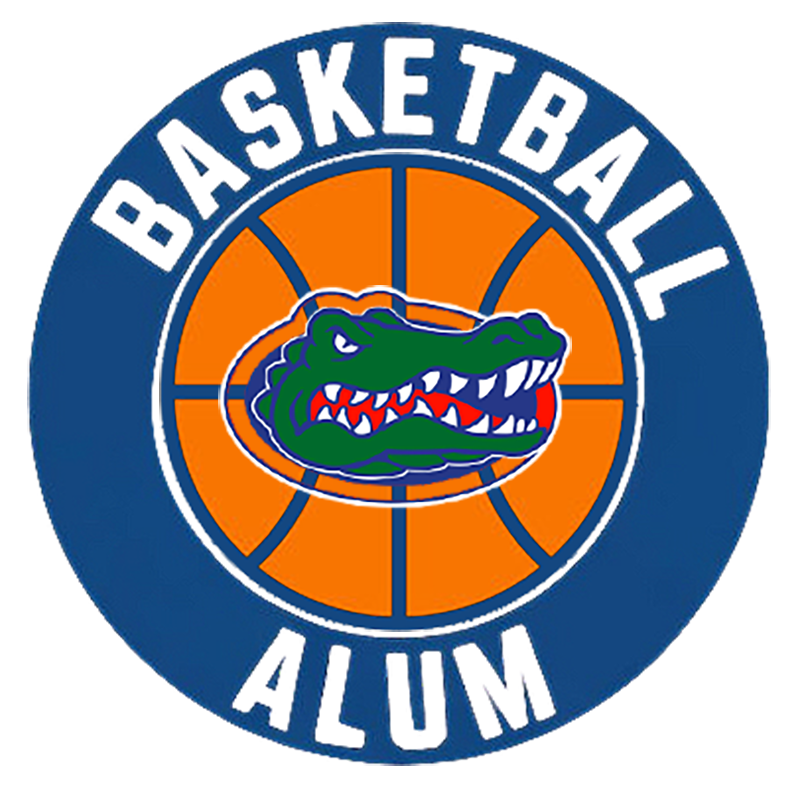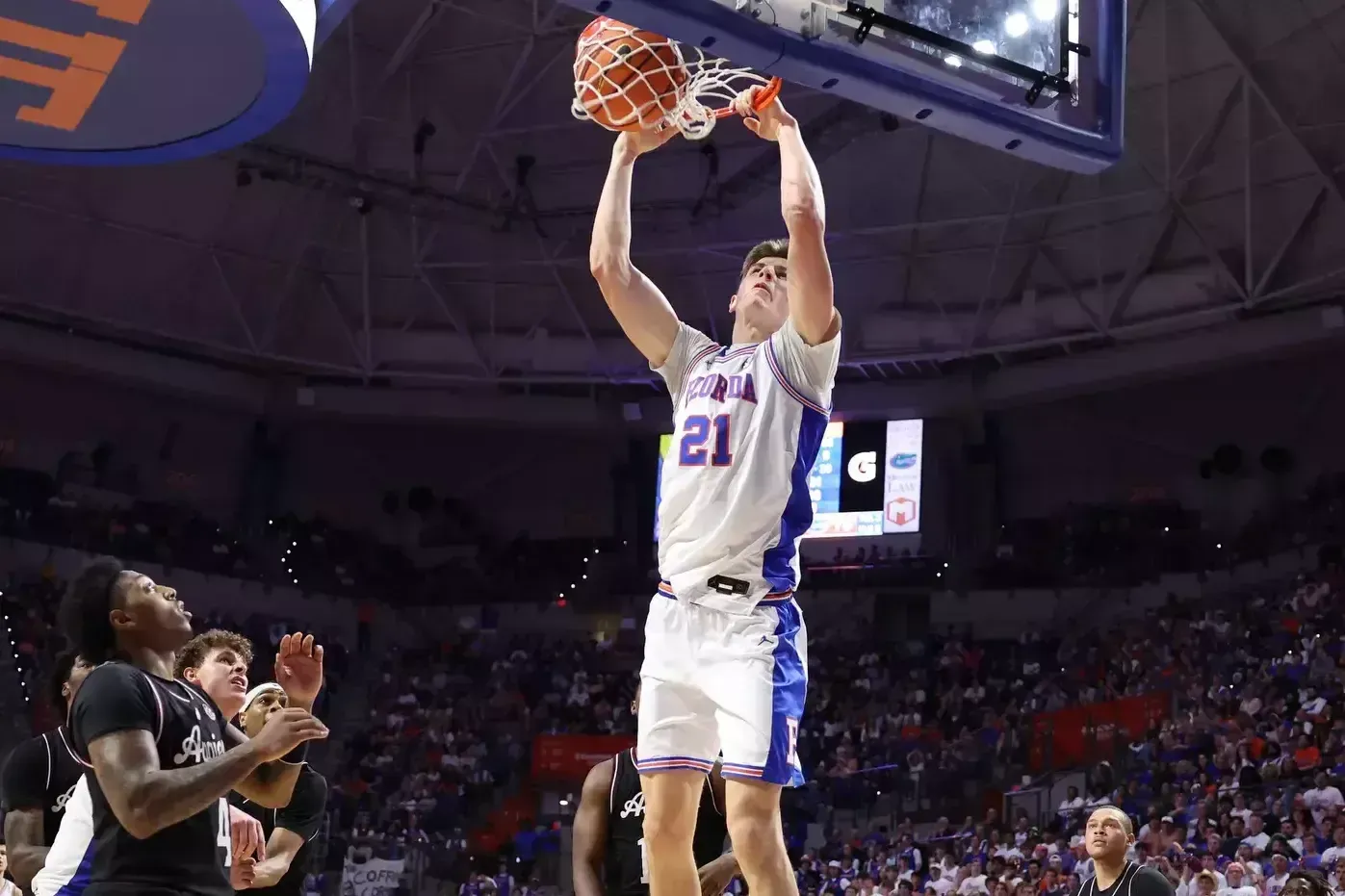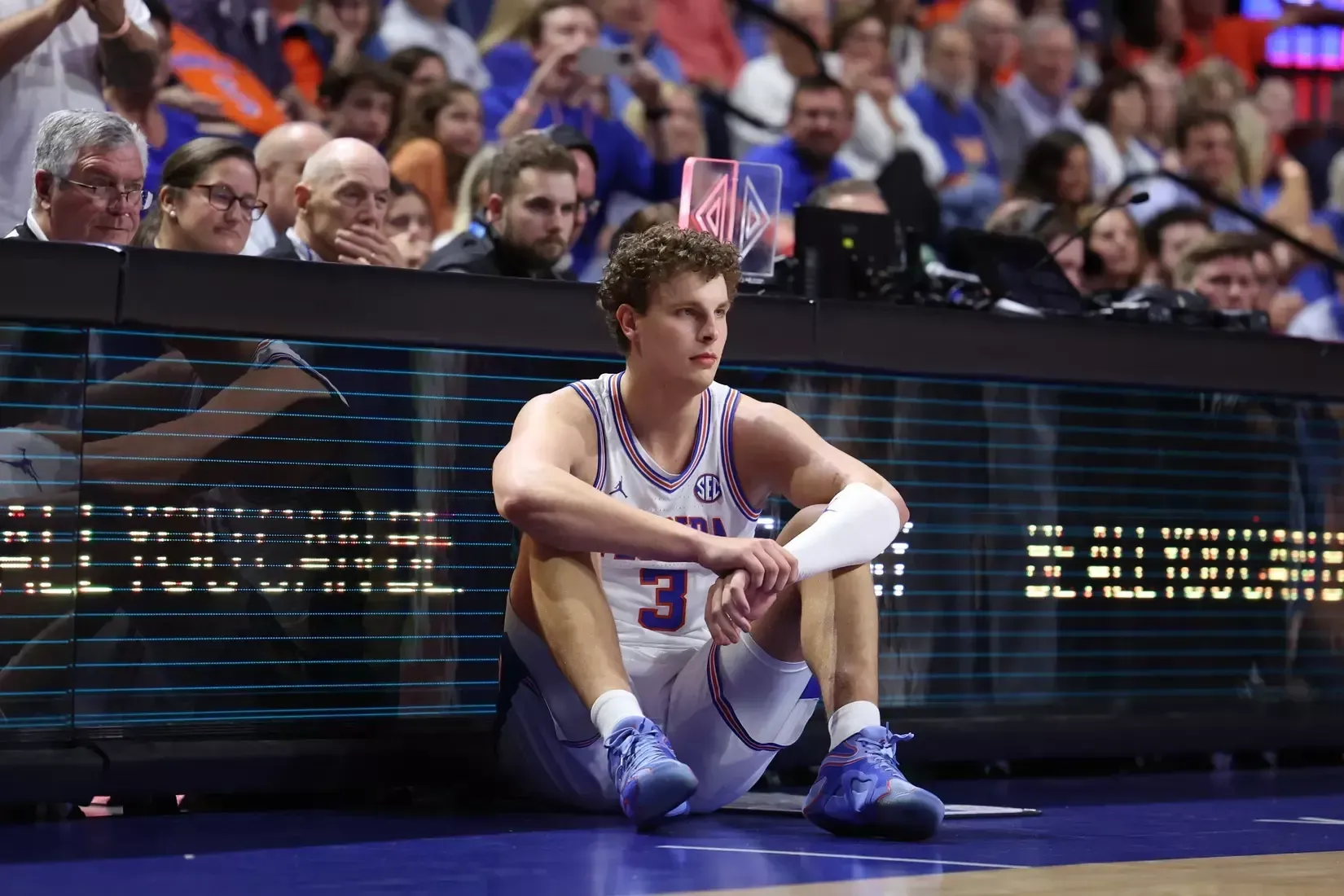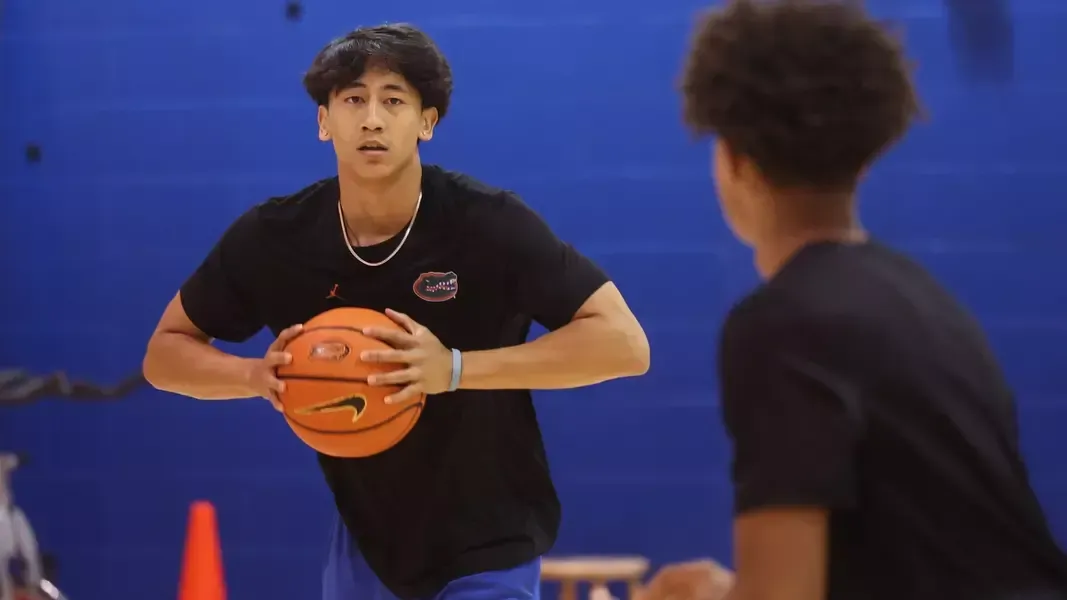
Veteran guard and Princeton transfer Xaivian Lee during a summer training session with his new squad. The data showed he was the perfect fit.
GAINESVILLE, Fla. – The presentation had just started, but the information immediately resonated. The Florida coaching staff clearly understood exactly who they were talking to.
“I’m really focused on numbers myself,” said Xaivian Lee, the 6-foot-3 guard who entered the transfer portal in March after a stellar 2024-25 season at Princeton. “I appreciate advanced stats.”
Head Coach Todd Golden and his staff were well aware of this when Lee visited in April, and they came prepared with proof of concept.
After a brief welcome, the screen displayed Zyon Pullin and Walter Clayton Jr.—two successful guards who transferred to UF from mid-major programs. Metrics confirmed that the competition they faced at their previous schools was comparable to the level Lee played at in the Ivy League.
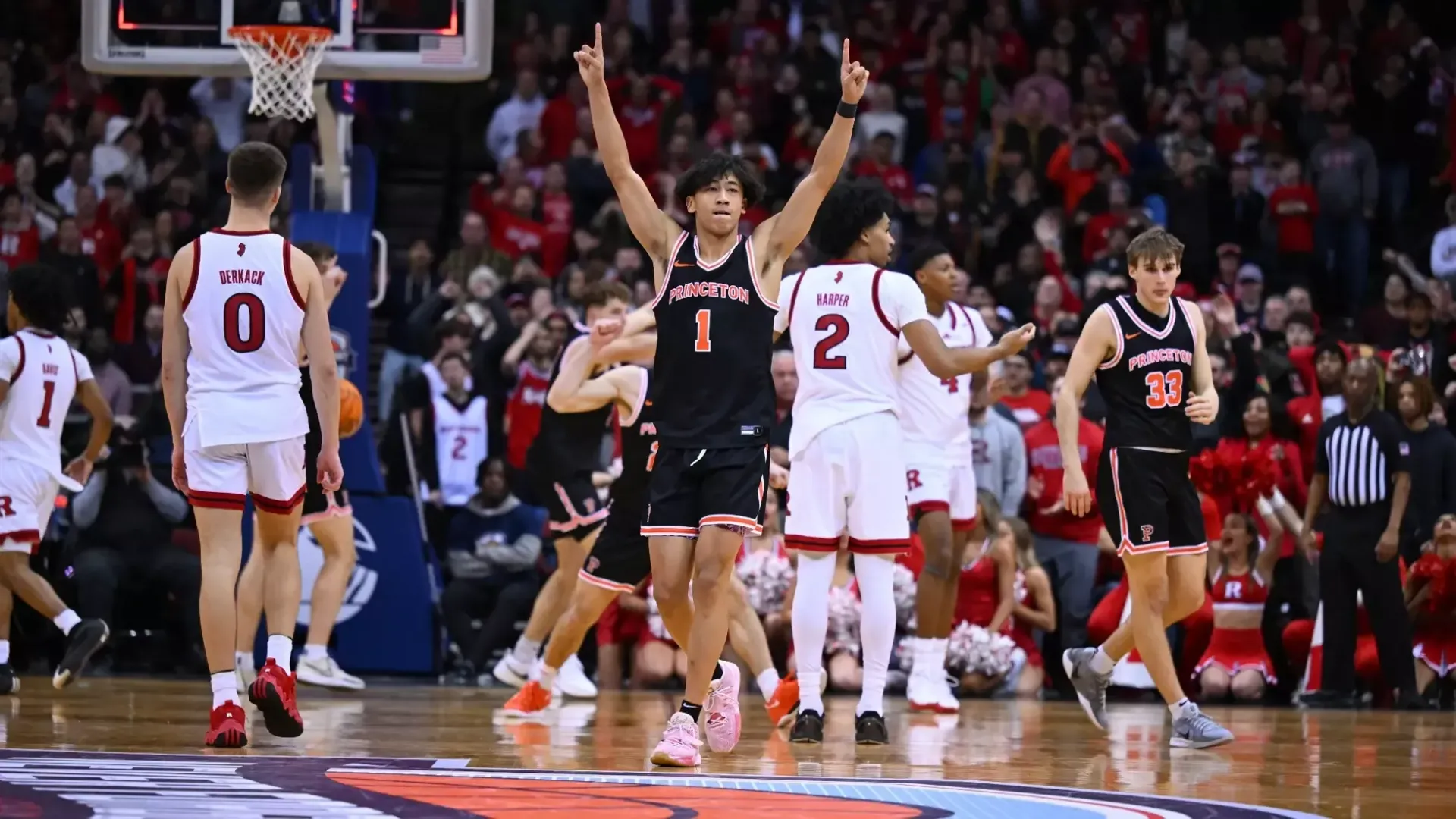
Over the past two seasons, guard Xaivian Lee (1) established himself as one of the Ivy League's most impactful performers.
The first example was Pullin, who arrived from California-Riverside. His career stats there showed averages of 12.0 points, 4.1 rebounds, 3.6 assists, and a 35.2% clip from three, earning him second-team All-Big West honors in his final season. In his single year with the Gators, Pullin boosted his averages to 15.5 points, 3.9 rebounds, 4.9 assists, shooting 44.9% from beyond the arc, and was named first-team All-Southeastern Conference.
Next up was Clayton. In two years at Iona, he posted 12.0 points, 3.2 rebounds, and 2.4 assists, culminating in the Metro Atlantic Athletic Conference Player of the Year award as a sophomore. Lee, like any savvy basketball enthusiast, knew the implication of the next comparison. In Clayton’s two seasons at UF, he averaged 17.9 points, 3.6 rebounds, and 3.4 assists. In 2025, he received multiple honors, including being named a finalist for the Bob Cousy Award (nation’s top point guard), first-team All-SEC, SEC Tournament Most Outstanding Player, first-team All-America, NCAA West Region MOP, and 2025 Final Four MOP after leading the Gators to the national championship.
The following slide featured a photo of Lee, superimposed into a No. 1 Florida uniform, along with three key themes the staff intended to detail: "Data Driven Improvement," "Commitment to the Work," and "Style of Play."
“How we play, how you fit gives you a chance to be the next great Florida guard.”
“How does this blueprint function? How does it all connect?” Golden elaborated. “These are the three major elements we use to explain his fit. We discuss how we drive improvement using a data-centric methodology, focusing on superior coaching and player management, and—most crucially—our playing style.”
By the conclusion of the formal pitch (and certainly by the end of his visit), Lee was convinced. He committed to the Gators the next week, immediately filling a major void in the backcourt. Although the program was energized by its dramatic championship run, it needed to replace 1,790 points—equaling 53% of the team's scoring—following the departure of the standout senior guard trio of Clayton, Alijah Martin, and Will Richard.
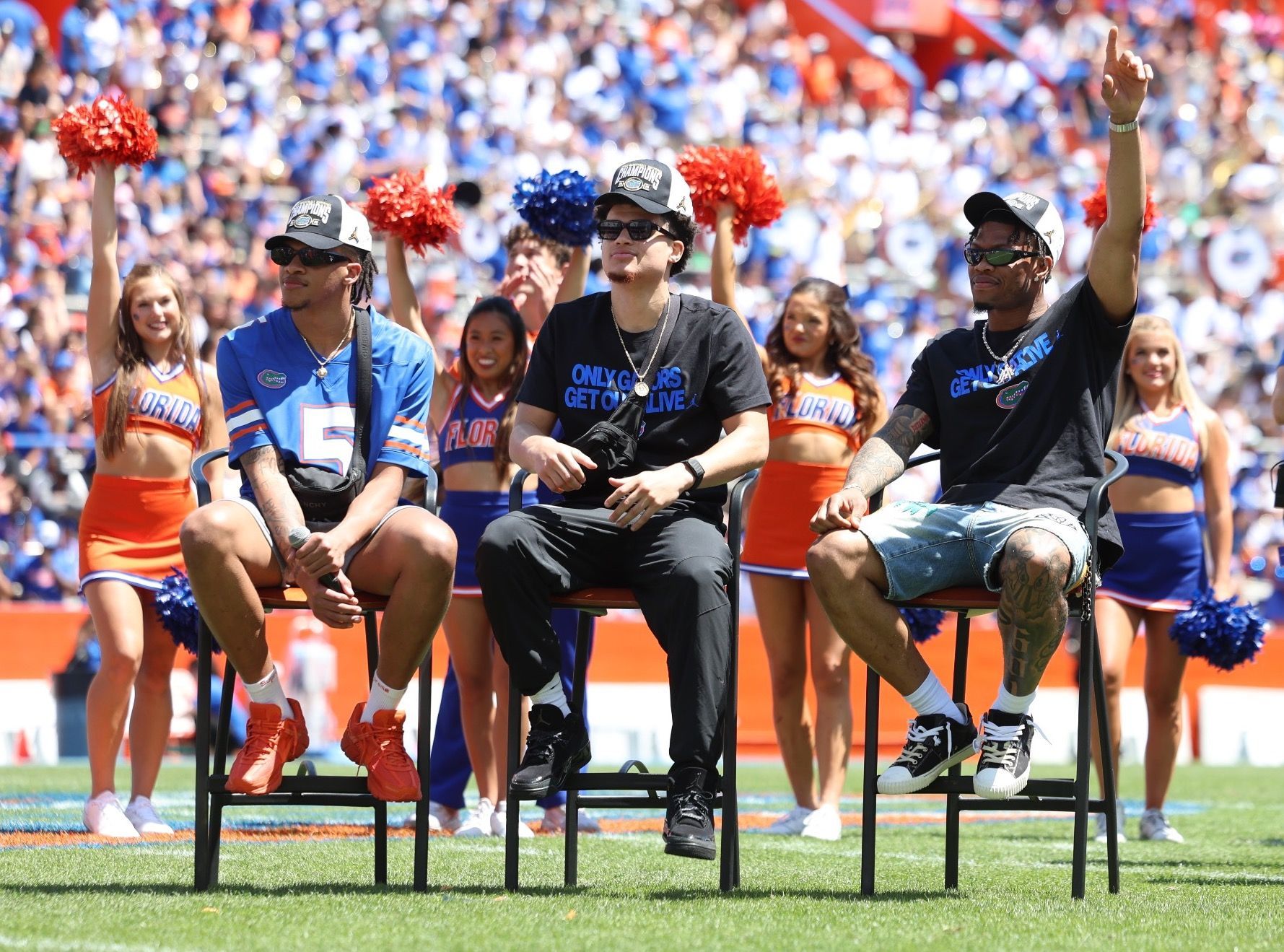
Pictured from left: Former guards Will Richard, Walter Clayton Jr., and Alijah Martin celebrated the national title at the April Orange & Blue Game. All three players went on to be selected in last month's 2025 NBA Draft, highlighted by Clayton becoming the program’s first first-round pick in four years.
The successful acquisition of Lee, who averaged 16.9 points, 6.1 rebounds, and 5.5 assists on his way to first-team All-Ivy League honors, mirrored the approach used to recruit transfers like Clayton, Pullin, Martin, Richard, and big men Rueben Chinyelu and Micah Handlogten. UF’s recruiting strategy heavily leverages analytics—both historical data and projected performance—a method that has yielded incredible on-court results.
During Florida’s 36-win 2024-25 season, opposing coaches and media consistently praised the team's roster construction and on-court cohesion. Following the loss of the nation’s top guard trio, the offseason rebuild centered entirely on the perimeter, given that Florida is set to return what many expect will be the nation's best frontcourt for 2025-26.
Last week, Golden and his staff provided a demonstration of the same presentation used to recruit Lee (and later used for transfer guards Boogie Fland from Arkansas and AJ Brown from Ohio U), offering insight into the meticulous nature of their data analysis.
“It gave me the impression that they genuinely understood my game and weren’t just relying on the 'eye test,' which I feel many coaches do,” said Lee, an 1,100-point career scorer known for his passing ability. “Other coaches typically focus on the freedom you’ll get. That’s good, but these [Florida] coaches used data to explain why they valued me, why I was an ideal fit for their program, and why they wanted me.”
Golden reinforced the process: “A major component of our recruiting is painting a picture of how student-athletes will integrate successfully into our system, both individually and within the team concept. We develop these presentations and review them with the player, usually alongside a family member. The first portion introduces the Florida program. The second half is deeply analytical, customized specifically to them.”
Lee is the latest in a line of Florida players who were unranked in the top 100 national prospects coming out of high school. In fact, all 13 scholarship players on last season’s championship roster fit that description. The Gators became the first team since the NCAA Tournament expansion in 1985 to win the title without a single top-100 high school recruit—proof that the coaches’ system and plan, not just raw high school rankings, created greatness.
Lee was shown precisely how and why he could be the next success story.
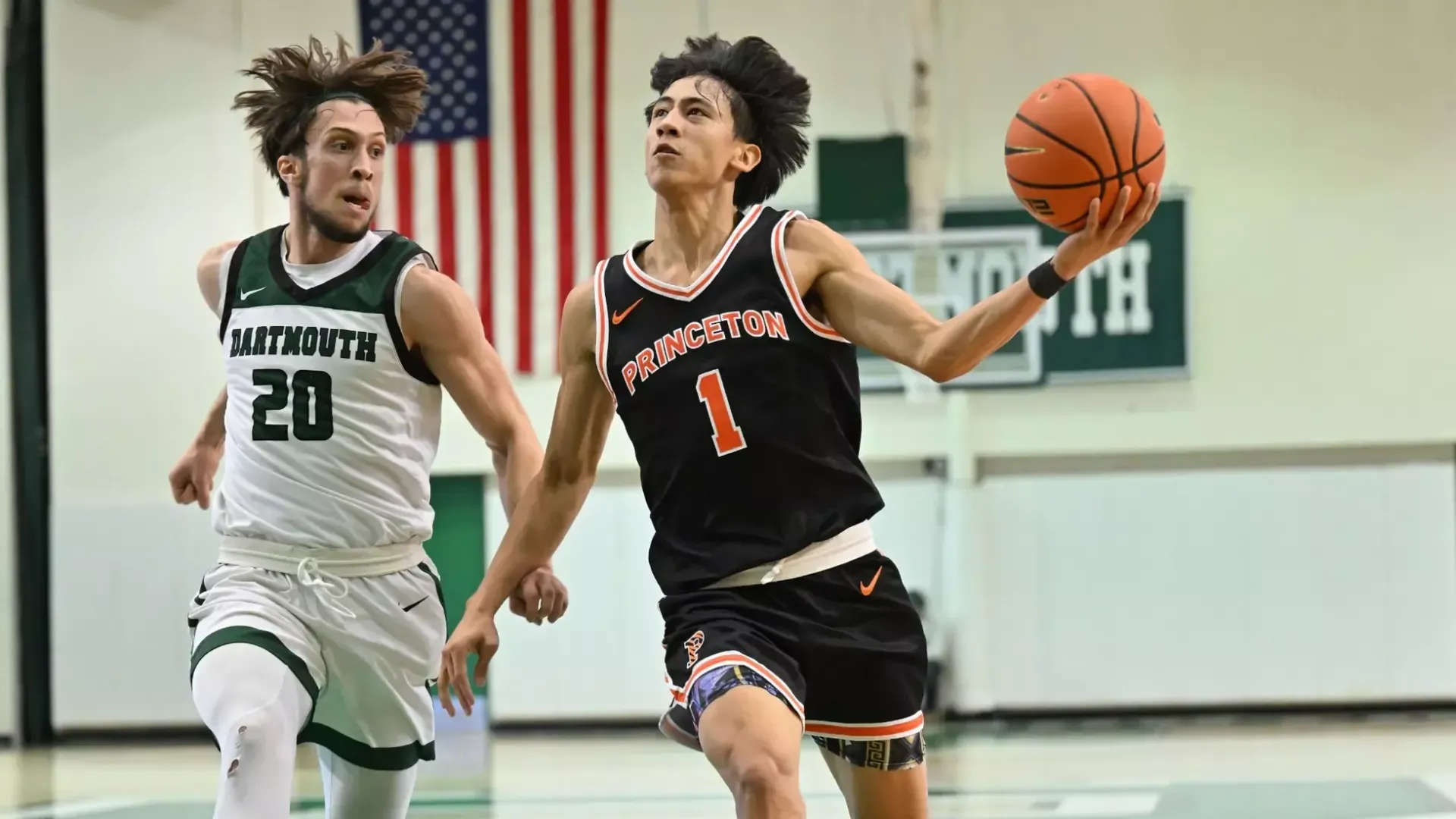
Xaivian Lee (No. 1) consistently put up big numbers at Princeton, averaging 17 points per game across his final two seasons. This included 19 contests where he scored 20 points or more, and four where he hit at least 30.
The presentation opened with slides highlighting Florida’s athletic and academic excellence, including its championship history and the university's ranking as a top public school (per Forbes). This academic standing was important to Lee’s parents, given his decision to leave Princeton a year short of his degree. The team culture and philosophy—seeking players with exceptional attitude and work ethic—were also stressed.
The squad’s underdog identity, famously championed by Martin's "Remember where you came from" slogan during the postseason, was featured with a video montage of championship-season highlights. “They should all want to commit after that,” Golden quipped.
The focus then shifted to player development, using Pullin and Clayton as case studies, followed by a detailed explanation of the program's "Hustle Stats" grading system. The staff tracks every 5-on-5 practice possession across 40 distinct statistical areas proven to correlate with winning. This “Moneyball” approach calculates each player’s "HSE" (Hustle Stat Efficiency) score for the day.
Assistant Coach Jonathan Safir, who previously spent three seasons as the Director of Basketball Strategy and Analytics and was vital to the championship roster, explained the philosophy: “The core theme of Hustle Stats is prioritizing process over result. For instance, the box score only shows two ball-handling stats: assists and turnovers. We break down assists further into assists, virtual assists (passing to a teammate who misses an open shot), and hockey assists. If you make the correct pass but the shot doesn't fall, the box score penalizes you, but our system rewards the right play. Over time, making the correct play reliably improves the team. An analytical and high-achieving individual like Xaivian understands this principle.”
The system divides categories into shooting, ball-handling, defense, and rebounding, each containing 9 to 18 sub-categories assigned specific numerical values. Values are adjusted yearly based on personnel, but general rules apply: a made shot adds points to HSE; a miss subtracts points. An assist might be +3, while a live-ball turnover is a severe -5. Positives include charges taken and box-outs; negatives include missed close-outs and defensive gambles.
Players receive a grade after every practice, with numbers aggregated and reviewed constantly.
The next segment covered Lee's HD Intelligence (HDI) scouting report. HDI, a third-party analytics service, categorized Lee as an elite efficiency and high-usage shot creator who excelled in open-floor scenarios. He scored well as a defensive rebounder and was rated solid as a shot-blocker and steal threat. The report did identify an area for improvement: subpar finishing at the rim.
Finally, the presentation showcased Lee’s data from KenPom.com for his last two seasons at Princeton. The coaches highlighted his offensive possession (usage) percentage of 29.2 (75th nationally) and his assist rate of 36.8% (19th). Notably, his usage rate held steady against Tier A&B competition (Top 100 teams), and his assist rate actually jumped to a devastating 44.6%.
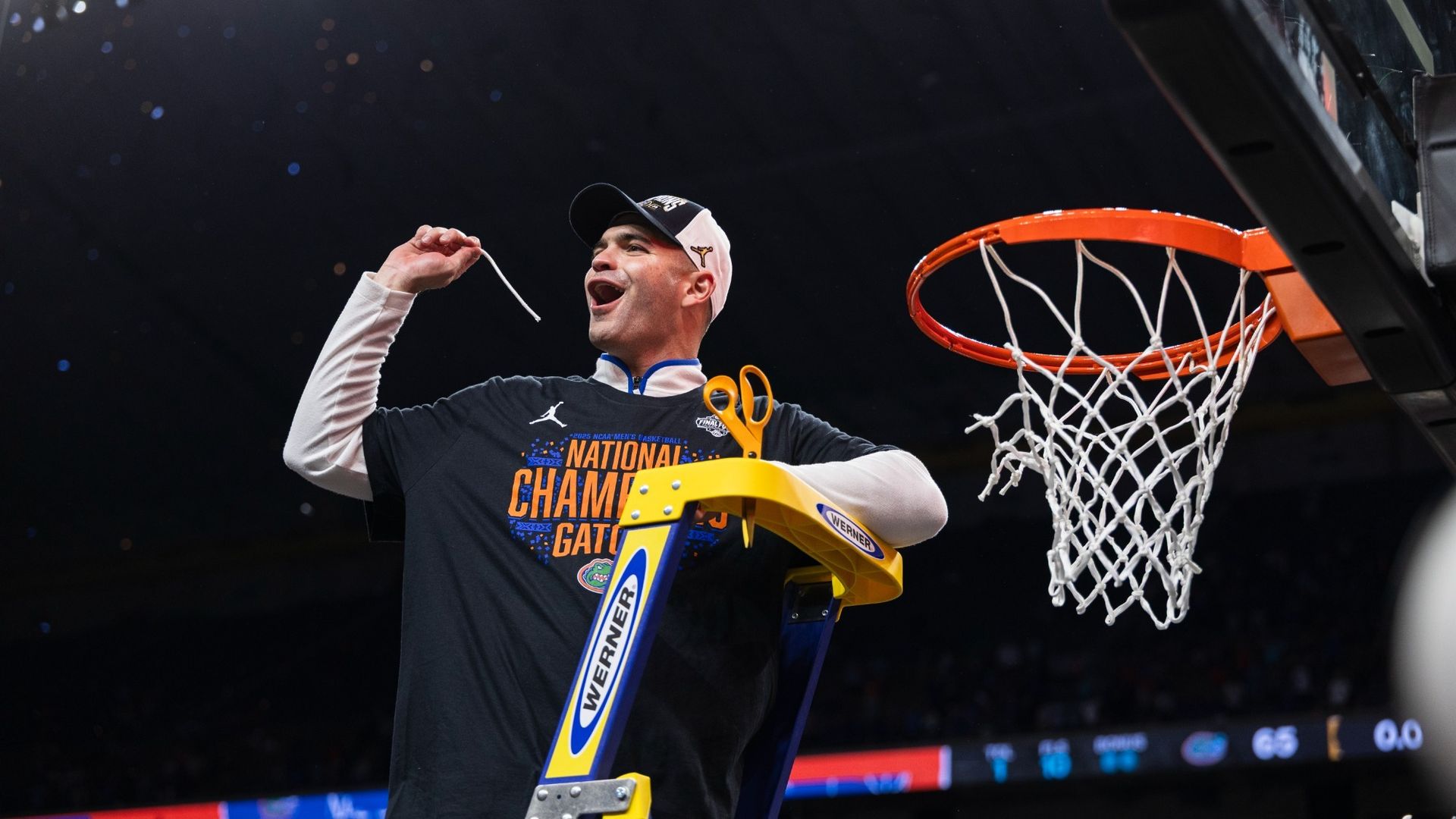
Florida assistant coach Jonathan Safir moved up this spring after spending three years prior as the team's director of basketball strategy and analytics.
Safir emphasized the importance of high-level competition metrics: “His numbers against Tier A and B competition were our first critical check. Moving from the Ivy League to the SEC means almost every game will be Tier A or B. His numbers did not drop off when the competition increased. That was vital. From there, we looked at other advanced metrics, such as off-the-dribble shooting, to predict his performance in a 30-plus game SEC schedule.”
Safir continued, noting one numerical comparison player for Lee was future NBA star Damian Lillard during his 2010 season at Weber State—a highly encouraging sign.
“These numbers are very promising,” he stated. “A statistical drop-off against elite competition would have been a major red flag. But every study we performed—backed by the eye test—suggested Xaivian has a superb chance to succeed transferring up multiple levels into the best conference in college basketball. We also extensively researched Xaivian’s personality and loved his fit with the culture we’ve built over the last three years.”
Discussions also included raising Lee's catch-and-shoot percentage, which was low at Princeton because he was forced to create most of his own offense. Lee’s exceptional ability to freeze defenders and generate space off the dribble makes him a major threat late in the shot clock.
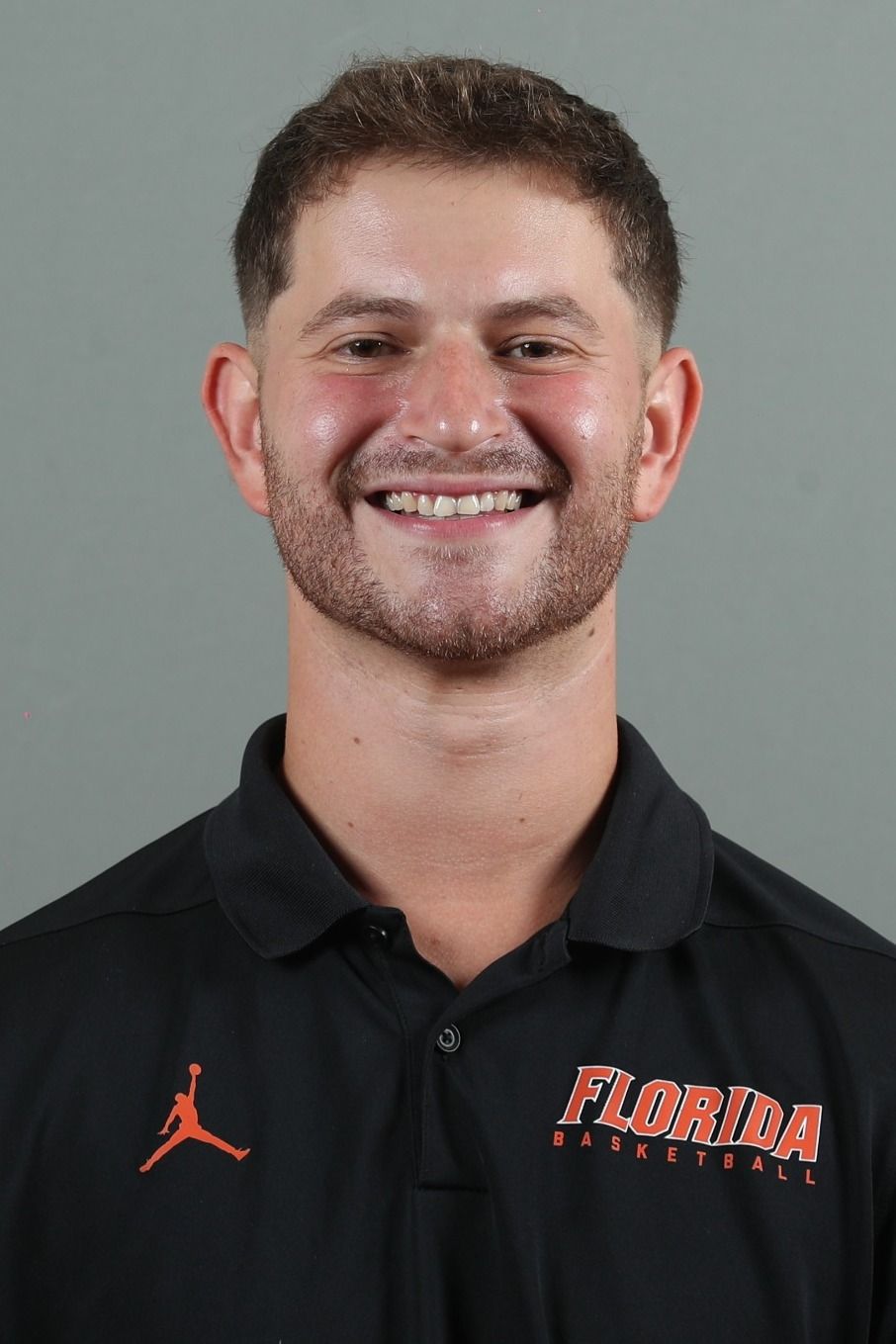
UF Director of Basketball Operations Jordan Jacobson pointed out that Lee’s catch-and-shoot quality should improve in the new system: “His elite off-the-dribble numbers confirm his skills will translate, but we are optimistic the quality of his catch-and-shoot opportunities will be far better here because he will be surrounded by multiple high-level playmakers. He was the primary offensive engine at Princeton, which limited the high-quality catch-and-shoot looks available to him.”
Next, they showed Clayton's final Iona KenPom page side-by-side with Lee's final Princeton page, highlighting similarities. The presentation then introduced Assistant Coach and Director of Player Development Taurean Green, a two-time national champion point guard with NBA experience, who focuses intensely on guard development.
This led to a comparison of Pullin and Clayton’s productivity at their former schools versus their numbers at UF, noting how their transition assist figures effectively doubled in Florida’s faster-paced system. They also benefited, again, from being surrounded by better players.
The presentation concluded with video footage. Clips of Clayton and/or Martin executing specific transition plays (driving, finding teammates, cross-court passing) and ball-screen offense (attacking the rim, mid-range, shooting, facilitating) were shown. In every instance, the Gator clip was immediately followed by multiple clips of Lee performing the same successful action.
The goal of this specific clip selection was to offer immediate comfort that the player would thrive in the system, Jacobson explained, noting that the staff had already been sold on Lee long before this visit. A conversation with forward Thomas Haugh, who was prep-school teammates with Lee, revealed that Lee was a big fan of former Gator Tre Mann. The staff quickly added four or five Tre Mann clips showing similar moves to those Lee makes.
The comparison worked. Lee’s individual game closely resembles elements of Mann’s, particularly in his ability to create space off the dribble.
The final sequence interspersed highlights of Lee with clips of both Clayton and Mann in late-game, late-clock scoring situations.
The final slide was a redesigned version of the initial one: Lee in his UF No. 1 uniform, arms raised, beneath the simple message: NEXT 1 UP.
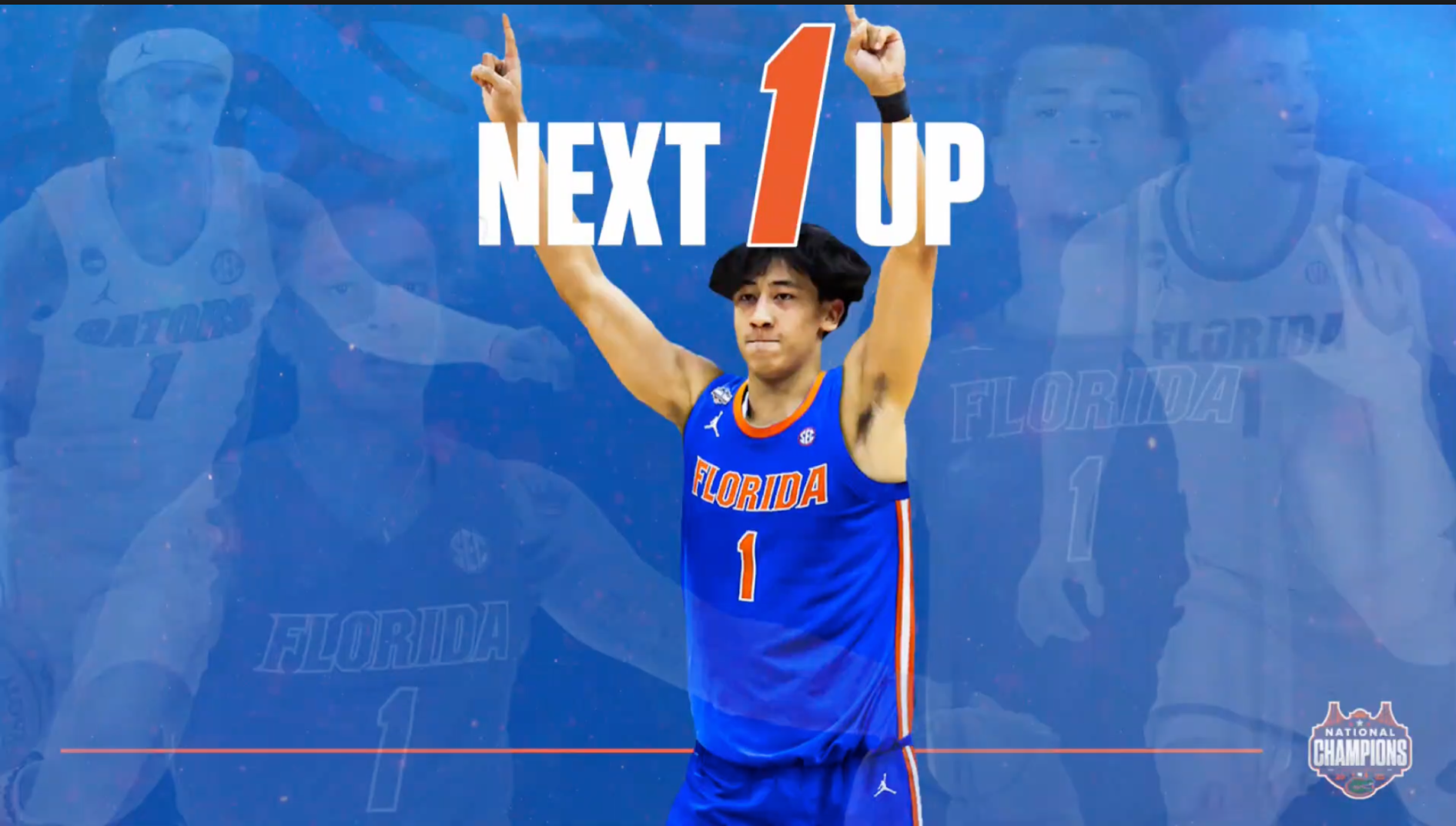
Now, the hard work begins: integrating the new backcourt pieces. This transition will be the focus of the coming months in the gym. But the highly analytical presentation the coaches crafted for Lee (and later for the equally talented combo guard Fland) established the perfect foundation.
“I thought I knew my game well, but the way they analyzed it raised it to a whole new level,” Lee said. “It all made perfect sense.”
And that was the goal for everyone involved.
